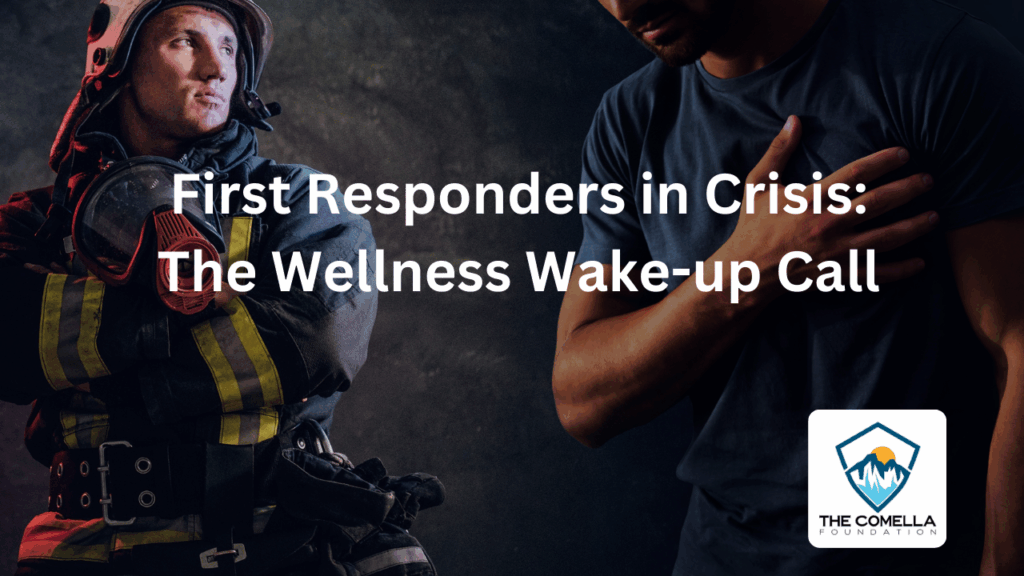First responders—our police officers, firefighters, and EMS professionals—are the backbone of community safety. Yet behind the uniform, too many face an invisible battle: chronic stress.
This is not just a “tough part of the job.”
It’s a slow-moving crisis, well documented by the U.S. Department of Justice’s COPS Office and other national research. And unless it’s addressed with proactive, department-wide wellness programs, the consequences will continue to escalate: higher insurance premiums, more medical leave, more cardiac events, more mental health crises, and tragically—more suicides.

The Data Speaks: Stress Is Breaking Our First Responders
The DOJ’s 2019 report to Congress on Law Enforcement Mental Health and Wellness found:
- Up to 20% of officers show symptoms of PTSD—compared to 3.5% in the general population.
- Chronic stress is linked to a higher risk of heart disease, the leading cause of line-of-duty deaths among police.
- Departments with proactive wellness programs saw reduced sick days, fewer injury claims, and lower turnover.
The April 2024 COPS Dispatch article on Health Training highlighted real-world examples where wellness-focused training reduced injury-related leave and improved morale across entire agencies.
And in the Resiliency in Law Enforcement report, the COPS Office documented that structured resilience programs—including breathing, movement, and relaxation techniques—improved recovery from stress, lowering the long-term toll on mental health and significantly reducing suicide risk.
Why Traditional Approaches Fall Short
Many departments have Employee Assistance Programs (EAPs) or occasional mental health resources, but these often only engage after a crisis has already struck.
The missing piece is daily, proactive stress regulation—a skill set officers, firefighters, and EMS professionals can use in the field, on the spot, to prevent stress from compounding shift after shift.
Operation: Stress Shield – The Comella Foundation’s Proven Model
Operation: Stress Shield was built on the osteopathic principle that “structure governs function” and is designed exclusively for first responders.
We teach simple, movement, breathing, and relaxation techniques that:
- Down-regulate the nervous system in minutes
- Relieve physical tension and improve mobility
- Restore mental clarity before, during, and after high-stress calls
No expensive equipment. No complex scheduling. Just immediate, field-ready tools your team can use anywhere.
The Measurable Benefits of a First Responder Wellness Program
Departments that implement ongoing wellness programs experience:
✅ Lower insurance premiums from fewer claims
✅ Reduced cardiac events and on-the-job injuries
✅ Fewer mental health crises and suicides
✅ Lower turnover and burnout rates
✅ Improved morale and job satisfaction across the board
This isn’t just about saving lives—it’s about protecting your budget, your workforce, and your mission.
The Cost of Waiting Is Too High
Every month without a comprehensive wellness program means more sick days, more workers’ comp claims, and greater risk of losing your best people to burnout or tragedy.
The research is clear, and the tools exist now. All that’s missing is the decision to act.
Take the First Step — For Your Team, Your Budget, and Your Mission
The Comella Foundation is offering a FREE 20-Minute Discovery Call to explore how Operation: Stress Shield could help your department:
- Reduce insurance premiums and healthcare costs
- Lower rates of cardiac events, mental health issues, and suicide
- Decrease turnover and burnout
- Improve morale, performance, and community service outcomes
Your team is ready to protect others—let’s make sure they have the tools to protect themselves.
📞 Click here to schedule your free call today and start building a healthier, stronger, more resilient department before the next crisis hits.
